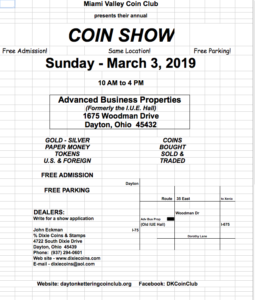2021 Silver Dollars?
A House Bill was introduced in July to authorize the production of a 2021-CC Morgan Dollar and a 2021-P Peace Dollar. The amount of each type was not disclosed, however the total mintage of the two would be 500,000 coins.
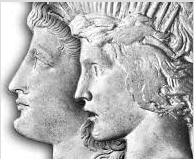
The Morgan would be struck in either Denver or San Francisco using an old press from the Carson City Mint. The Peace Dollar would obviously be struck in Philadelphia. The Bill also says that the Peace Dollar would be struck in high relief, just like the 1921 dollar was.
Each of the proposed dollars would carry a $10 surcharge, 40% to the ANA, 40% to the World War I museum in Kansas City, and the remaining 20% to the Nevada State Museum in Carson City.
Coins As A Magic Ward

Drill a small hole in a silver dime and tie it with a red thread around your ankle (it’s not to hard to find a dime with a small hole in it).It is supposed to ward off illness.
Place a dime under the tongue to detect the presence of a jinx.
Early American thin silver coins were bent twice to ward off witches.
A Mercury dime is thought to have the power to attract prosperity, especially if it was minted during a leap year.
Place a coin under your welcome mat to keep bad luck from visiting.
Place a heavy coin on the eyes of the dead so that the eyes stay closed and the dead won’t find someone to go with them.
Coins For Luck
If good luck is your goal, carry a coin from a leap year between 1916 and 1946. Silver coins are said to work best (1916, 1920, 1924, 1928, 1932, 1936, 1940, 1944).
Some people believe than wearing a penny in your shoe will bring good luck (penny loafers anyone?).
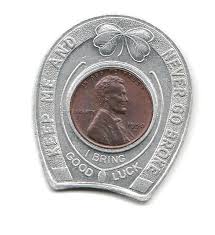
Anyone heard this: “See a penny, pick it up, all the day you’ll have good luck. See a penny, let it lay, bad luck follows you all day.” Some say it should be found “heads up”.
An Indian Head Cent is thought to be the “luckiest” lucky penny.
In days of sailing ships, the captain would nail a coin to the mast of his ship for good luck.
A bride was to place a coin in her left shoe on the day of her wedding to bring about a lucky marriage (an English sixpence was the coin of choice).
Toss a coin in a fountain and make a wish.
Holed Coins
We have a few members (at least one anyway) who collect holed coins. Most of us collectors turn our noses up and quickly dismiss any coin with intended damage to it. Maybe “we” should rethink intentionally “damaged” coins.
Back in June of this year Coin World had an article about a holed 1792 half disme that sold at auction for $20,400. It was graded PCGS Very Good Details, Holed. Just a few months before it sold at the 2019 Fun Show for $18,000.
Maybe we should recheck all those damaged coins we come across. Putting them in a junk box could be a big ($$$) mistake. Just a thought!

A Coin For Luck
Claire, a good friend of his father’s, gave the young lad a gold coin for good luck. You see, this fellow was going off to the war in the Pacific in 1942. He called it his “St. Claire medal” and said he would wear it right next to his dog tags.
After an August 1943 mishap, during which he was injured, the sailor sent a letter to Claire with his thanks. He told her his good luck coin did service “above and beyond its routine duties”.
He passed the coin on to a Solomon Island’s native who helped him and his crew after the accident.
Although there was never any mention of the type of coin it was, if you study the picture below, you will probably agree that it was a $20 gold piece. This is a famous photograph of the sailor, John F. Kennedy.
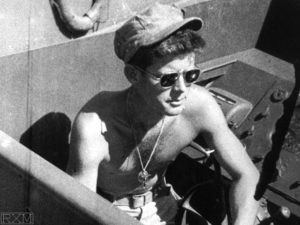
June Club Meeting 2019
Don’t miss this week’s club meeting. Exciting talk and a great monthly auction!
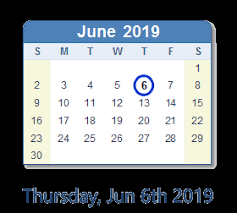
Why Colored Ink On Our 1st Banknotes?
In 1861, when the government started printing demand notes, a green ink was use used on the seals on the front of the note and most of the back of the note. The green color gave the notes the name they were to be known by, “greenbacks”. This basic color design was repeated on 1862 and 1863 Legal Tender notes.
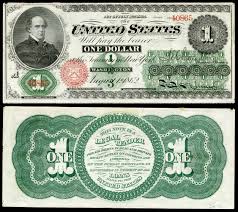
Legal Tender

Demand Note
The big question is why spend the money to issue notes with colored ink?
Simple: it was hard to counterfeit.
Today we have color printers that can easily duplicate US currency. Back in the 1860’s there was no easy way to recreate any color. Photography was in its infancy and all photos were shades black and white. Nobody had a camera that could take color pictures. So the government thought they were pretty smart by issuing notes containing green ink
May 2019 Club Meeting This Thursday
Our next meeting is this week, Thursday May 2nd. Please plan to attend and have some fun learning new things about coins , currency, and medals. Also, the Early American Copper convention is this Thursday, Friday, and Saturday.
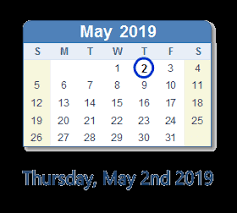
National Coin Week April 21-27, 2019
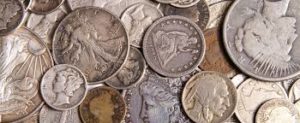
This year National Coin Week is going to feature the Great American Coin Hunt. Dealers from all across the country are going to be placing rare and valuable coins into circulation. The hope is that this coin release will spark the coin collecting hobby in non-collectors and especially younger people.
Here is a map of where coins are going to be mixed into circulation.
So make sure you pay with dollars and check out that change. You are liable to spot Indians, Buffaloes, silver dimes and quarters, and even some red and blue seal notes.
Also the Mint is releasing 10 million 2019 America the Beautiful Quarters with a first-ever “W” mint mark.
It should be a fun and interesting week!
April 4th Meeting
Thursday is our next Miami Valley Coin Club meeting. Come join us!
Learn something new, sell your extra coins, or buy the coin you may be missing!
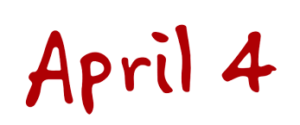
Anyone Can Make A Mistake, However…
An 1847 $500 banknote was certified by PMG (Paper Money Guaranty) and auctioned by Heritage Auctions in January 2016. In the auction the note was described as newly discovered and the only example of this type of notes issued between 1812 and the 1860’s. When the hammer fell, the note sold for $199,750.
By studying newspapers starting in 1847, a researcher found articles warning the public about counterfeit $500 Treasury notes. After a lot more research, the note ended up being an example of one of these 1847 counterfeits.
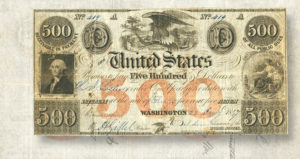
Someone paid $199,750 for a certified piece of currency only to find out later that it was a fake. As our ability to look back and research more and more continues to improve, how many other “certified” coins and pieces of currency will surface as fakes? It’s a scary thought. How many times have we, as collectors purchasing an expensive item, been told that we should make sure that a third party has certified the item?
The Value of My 1853 Three-Cent Silver… Then
The 3-Cent Silver coin, or Trime, was produced beginning in 1851 and minting of these coins continued through the year 1873. The Type I coins, 1851-1853, were coined in the millions of pieces. After 1853 mintage numbers never again attained that kind of volume.
In 1850 the public began hoarding silver coins. With small-value coins needed for commerce, the three-cent silver was born. The Type I coins were only 75% silver and 25% copper, an attempt to discourage melting coins for their silver content. They cost the mint less than 3 cents to produce and are the smallest U.S. coin ever minted. In 1854 the silver content was raised to 90% in an attempt to encourage circulation, but the coin was thinned down to keep it at the same value. My 1853 coin was one of 11.4 million struck that year.
3- Cent Prices in the 1850’s… what could I buy?
Postage stamps had been recently been reduced from 5 cents to 3 cents.
1/3rdpound of cheese
2 eggs – raw
1/3rdpound of bacon
½ yd. of calico fabric
I wonder how many times my coin was spent to mail a letter? Apparently it was spent a lot because my coin only grades out as Very Good or Fine.

In the 1850’s a common laborer only made $1.00 per day; that comes to about $0.125 per hour. So on the bright side, someone would give you around 4 trimes for every hour you worked. What a deal!
The 1853, once I added it to my collection, completes my Type I set; an 1851, 1851-O, and an 1852. Now I have an 1853.
The Day I Lost My Home But Gained a Community
This is a story too good to pass by. It is a great reflection on all of us as part of the coin collecting community. Please follow this link and read Joe Best’s story.
It’s A Token, Not A Bird
It’s Conder, not Condor!
In the later part of the 18thCentury in the British Empire, including England, Ireland, Anglesey, Wales, and Scotland, there was a shortage of small denomination coinage. Because the government basically ignored the problem, and it became difficult to conduct normal business transactions, private business owners and merchants took matters into their own hands by issuing Conder Tokens. At the time they were referred to as Provincial Coins.
The tokens were re-named after James Conder, who was an early collector and cataloguer of them. Most of these tokens were minted from 1787 to 1804. They resemble our Hard Times Tokens in that many of them carried political captions, denouncing some area of the British government.
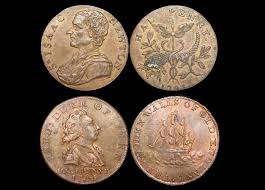
Collecting Conder Tokens is becoming more and more popular today. A great number of well-preserved examples can be found. On April 13th, Smith Family Auctions, a Germantown company, will auction off a number of Conder Tokens. If you have never seen a token like this, or would like to start, or add to a token collection, here’s your chance to find some Conder Tokens close to home.
Special 2019-W Lincoln Cent
The West Point Mint will strike three special issue Lincoln cents in 2019 bearing the “W” mintmark.
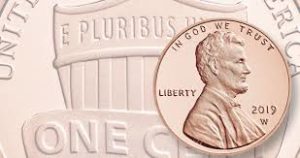
A standard proof version will be included with the 2019 proof set along with the ten regular coins of the set. A reverse-proof “W” Lincoln will be included in the silver proof sets (the other ten coins will have a San Francisco mintmark) due to be released at the end of April. The 20-coin Uncirculated Mint sets will include a 21stcoin, a 2019-W Lincoln cent with an uncirculated finish.
Black History & U.S. Coinage
America’s first African-American to appear on a commemorative coin, or any coin, was Booker T. Washington in 1946. The purpose was to raise money for maintenance of his memorial birthplace in Franklin County, Virginia. House Resolution 6528 Act passed Congress on August 7, 1946. Since then, other Black Americans have also made appearances on commemorative coins.
In 1997 Jackie Robinson was honored on a silver dollar coin and a five-dollar gold coin. Robinson was the first black player to play Major League Baseball.
The next year, 1998, Crispus Attucks, a stevedore or dockworker, the first person killed in the Boston Massacre, and thus the Revolutionary War, was honored on the Black American patriots coin.
In 2007 Little Rock Central High School and nine African-American students were honored on a one-dollar coin to highlight the desegregation of Arkansas schools. President Eisenhower sent the 101st Airborne Division of the Army to protect the rights of the nine students.
Then in 2014, the Mint issued the Civil Rights Act of 1964 commemorative coin honoring the signage into law of the bill by President Lyndon Johnson. The three African-American figures pictured on the obverse are not individually identified.
In April 2006, Congress awarded a Congressional Gold Metal to surviving members of the “Tuskegee Airmen”, the 761st Tank Battalion and the 452nd Anti-Aircraft Artillery Battalion, three all-black military units that served during and after World War II. Medal copies in bronze are available to the public.
How To Invest In Coins
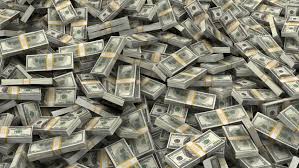
“If you want to make one million dollars investing in coins,
all you have to do is spend two million dollars!”
Next Meeting, Thursday February 7th, 2019!
See You There!
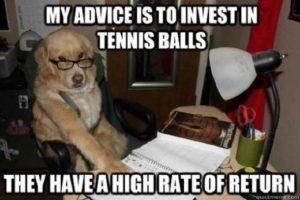
Does this look like one of our members?
Collecting Early Coppers
Early American copper coins were minted in larger quantities than any other denomination during their era, 1792-1857. Carrying around one hundred large cents, a dollars worth, would weigh almost three pounds. Half cents were struck in all but nine years; large cents were struck every year except 1815 and 1823. All half and large cents were minted in Philadelphia, there are no mint marks.
How is the best way to collect early American copper coins? It all depends on your preferences and patience. Here are some different ideas:
- Collect a complete date set.
- Build a collection by type.
- Collect one type only, but one of each year.
- Collect only one year, but every variety, or die marriage, of that year.
In order to maximize you enjoyment of collecting early copper coins, it is recommended that you follow these collecting tips:
- Collect the best coins you can afford. Focus on condition more than grade.
- The only time you should buy a “problem” coin is if it is so cheap that there is no way you could lose money on it or it is very rare and you can’t believe that you have the opportunity to own it.
- Buy the key coins first because they are only going to get more expensive and maybe out of your reach.
- Decide what grade you would be happy with and don’t buy coins that are worse or better than your target grade.
Remember, the fun is in running the race
and the thrill of the chase,
not just reaching the finish line.
Clubs and Associations
- American Numismatic Association
- American Numismatic Society
- British Numismatic Society
- Central Ohio Numismatic Association
- Central States Numismatic Society
- Florida United Numismatists
- Numismatic Society of India
- the Cincinnati Numismatic Association
- The Royal Canadian Numismatic Association
- The Royal Numismatic Society
Coin Links
- Boy Scouts Merit Badge
- Buffalo Nickels
- Bureau of Engraving and Printing
- Calculate your coin's gold, silver, or metallic worth
- Coins & Currency in Colonial America
- David Lawrence Rare Coins Reference Library
- Dayton Metro Library – Coin Books
- Fixing PVC damage
- Indian Head Cents
- Legandary Coins and Currency from the Smithsonian
- Medalblog
- Mints of the World
- Monnaie de Paris
- NapoleonicMedals.org
- raregoldcoins.com
- Royal Canadian Mint
- Smithsonian Institution Collection
- Starting a coin collection
- The Kittredge Collection
- The Perth Mint
- The Pobjoy Mint
- The Princeton University Numismatic Collection
- The Royal Mint
- United States Mint
- University of Virginia Coin Collection
- Where is my coin from?
Coin News
Miami Valley Coin Dealers
Speciality Clubs
- American Tax Token Society
- Barber Coin Collectors' Society
- Dayton Diggers Metal Detecting Club
- Early American Coppers
- Encased Collectors International
- Fly-In Club
- Liberty Seated Collector's Club
- Medal Collectors of America
- National Token Collectors Association
- Numismatic Bibliomania Society
- The Bust Half Nut Club
- The Civil War Token Society
- The Colonial Coin Collectors Club
- The Elongated Collectors
- The John Reich Collectors Society
- The Society of Paper Money Collectors
- The Token and Medals Society
- Unrecognised States Numismatic Society
- Worldwide Bi-Metallic Collectors Club

